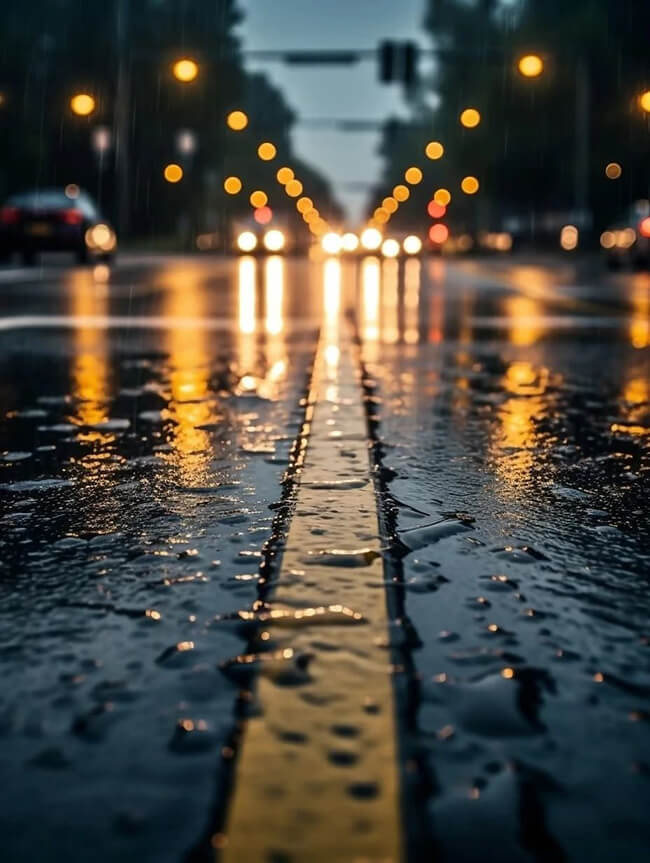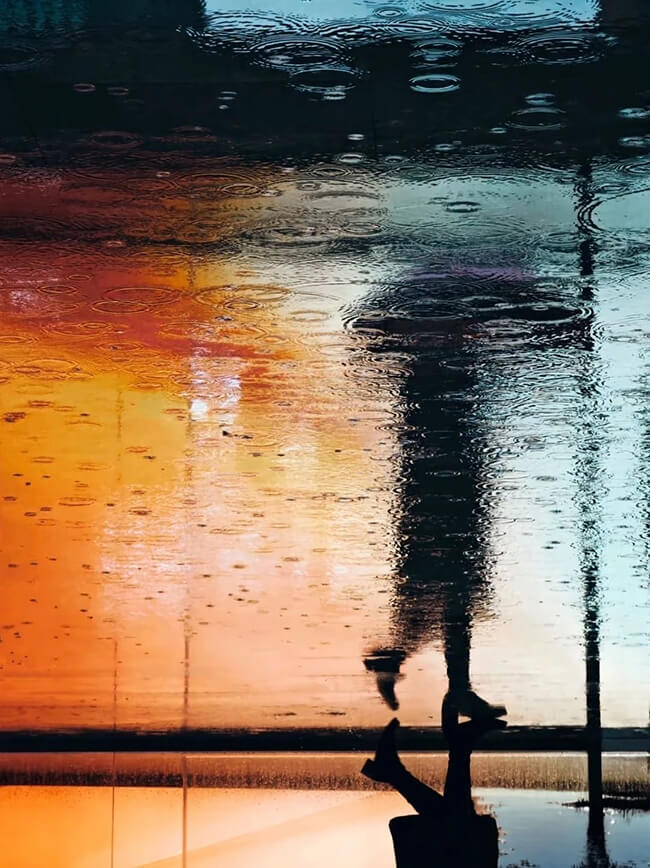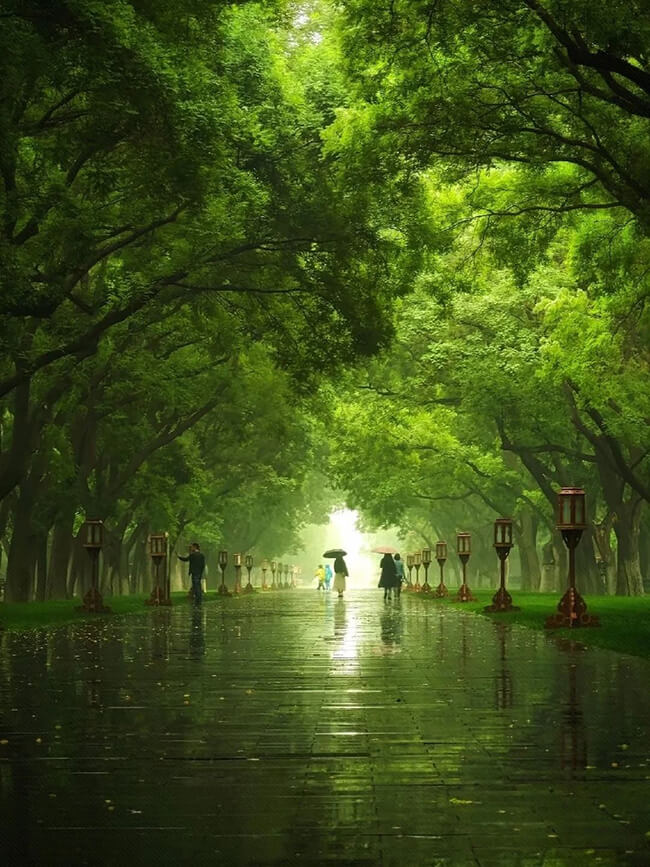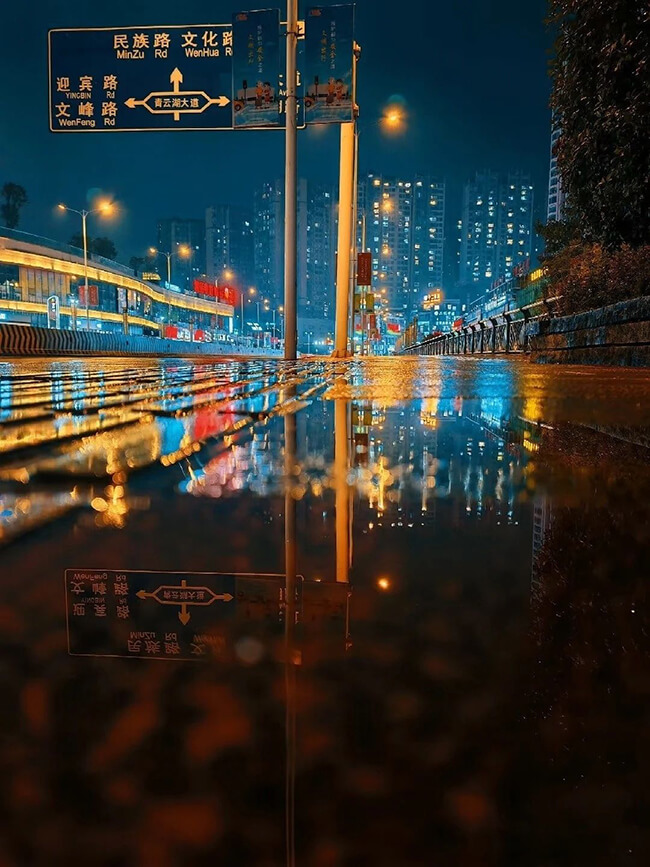Although rainy days are dimly lit and humid, they can Instead capture unique atmospheric and narrative qualities.
I. Make Good Use of Reflections and Refractions: Create Surreal Visuals
Low-angle shooting: Squat close to the ground and use puddles to reflect buildings, neon lights, or human figures, forming a symmetrical composition (e.g., smartphone lenses can gently touch the water surface for shooting).
Creative focus: Focus on the reflection to blur the real object, creating a mysterious sense of interlacing between reality and illusion.
Scene selection: Neon reflections at night, raindrop refractions on car windows, and reflections on smooth subway station floors are all excellent subjects.
II. Focus on Details and Colors: Emotional Close-ups of Rainy Days
Water droplets on wet umbrella surfaces, emerald-green trees after rain (with smooth roads as leading lines, evoking an Oz-like atmosphere), and trembling raindrops on petals (use macro mode to highlight texture).
Tips:
Protect equipment: Use a waterproof case for cameras and a waterproof bag for smartphones (cut open the lens area and attach a UV filter).
Use props cleverly: A transparent umbrella can both shield from rain and serve as a natural softbox; an LED fill light can create dramatic light and shadow.
Post-processing ideas: Properly increase contrast and cool tones to enhance the gloomy atmosphere; or retain the orange glow of warm streetlights and the cyan-blue in dark areas to form a cinematic color scheme.




Related Tags: Photography experience
